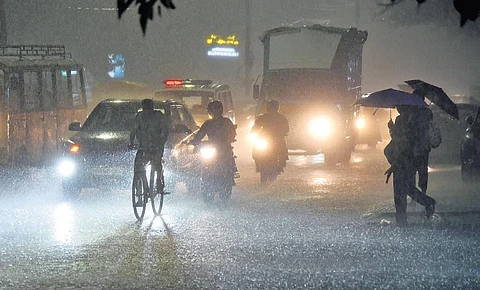

CHENNAI: IIT Madras has developed and operationalised a new regional climate model for Tamil Nadu that promises localised and accurate rainfall forecasts for an area as specific as Chennai corporation ward.
What started as a research project of PhD scholar SM Kirthiga five years back to provide weather forecasts for irrigation management has today turned out to be a major boon for flood mitigation.
IIT Madras has validated the new model and is running it on the supercomputers of Centre for Development of Advanced Computing (C-DAV) in Pune, which is implementing the National Supercomputing Mission. The model is run daily and the output (seven-day forecast) is shared with Tamil Nadu State Disaster Management Authority. Starting Wednesday, ward-wise rainfall forecasts are being provided to Chennai.
Popular global numerical models like European Centre for Medium-Range Weather Forecasts or Global Forecasting System, which are used by the Indian Meteorological Department (IMD), have coarser resolutions (grid size of 25 km and above). IMD runs the models on a larger-scale for the entire country and inherently these models are more inclined or focused on the southwest monsoon, which is the primary Indian monsoon, leaving few grey areas in the forecasting of northeast monsoon that has become more erratic in last few years and the South Peninsula Region is experiencing extreme weather events.
IIT Madras professor Balaji Narasimhan, one of the project guides and co-author of the research paper on the new model published in Indian Academy of Sciences, said: “Because of internal variabilities in global models, it is important for States like TN to have a region-specific weather model. We took a model called Weather Research and Forecasting (WRF), fine tuned it and ran it at a high spatial 4 km resolution suiting the requirement of southern regions of peninsular India.”
Narasimhan said the model will be useful for urban landscapes like Chennai, which often experience flooding. “Compared to the 25 km resolution model, our model with 4 km resolution can provide localised forecasts. Information like whether rain is likely upstream or downstream of Chembarambakkam reservoir can be critical in terms of disaster management.”
Kirthiga said forecasting the northeast monsoon is challenging due to unavailability of sufficient oceanic data and topography. A regional model will help meteorologists improve the accuracy. “We are integrating our model with the Real-time Flood Forecasting System developed for the Chennai basin by the TN government. We are providing forecasts for Tirunelveli to help mitigate floods.”
Tirunelveli Collector V Vishnu said: “The IIT Madras team has given a presentation about their model, which looks promising. What we need is flow parameters in the Thamirabarani river, which has a carrying capacity of around 60,000 cusecs. The model, with finer resolution, can pick-up local precipitation and calculate the likely rainfall in the catchment areas and forecast the inflow into the river. This gives us a few days of lead-time, which can be critical for precautionary steps.”